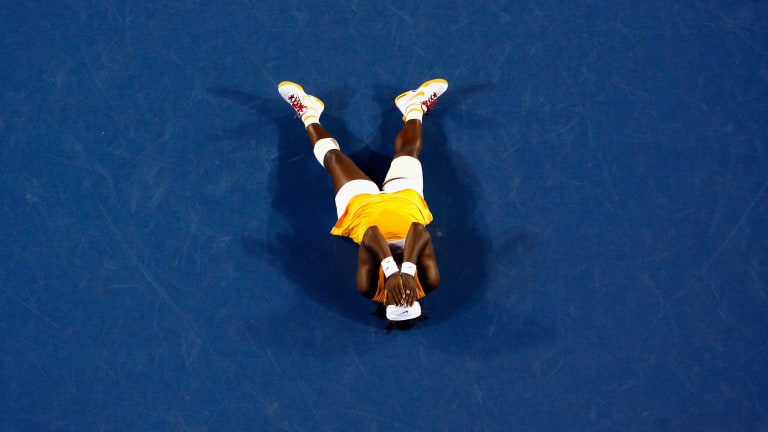Tennis Honors: Serena Williams
The Matches that Made Serena the GOAT: Williams d. Justine Henin, 2010 Australian Open final
By Oct 15, 2022Tennis Honors: Serena Williams
Gallery of Greatness: What Brady, Gretzky, Jordan, Joyner-Kersee, Vergeer and Serena have in common
By Nov 25, 2022Tennis Honors: Serena Williams
How soon could Serena Williams make a comeback?
By Oct 25, 2022Tennis Honors: Serena Williams
The Matches that Made Serena the GOAT: Williams d. Venus Williams, 2017 Australian Open final
By Oct 18, 2022Tennis Honors: Serena Williams
The Matches that Made Serena the GOAT: Williams d. Maria Sharapova, 2012 Olympic gold medal match
By Oct 18, 2022Tennis Honors: Serena Williams
The Matches that Made Serena the GOAT: Williams d. Martina Hingis, 1999 US Open final
By Oct 13, 2022Tennis Honors: Serena Williams
The Matches that Made Serena the GOAT: Williams d. Steffi Graf, 1999 Indian Wells final
By Oct 13, 2022Tennis Honors: Serena Williams
WATCH: Serena Williams teases “Tom Brady”-style comeback on Good Morning America
By Sep 14, 2022Tennis Honors: Serena Williams
Margaret Court and Serena Williams: A Comparative Discussion
By Sep 13, 2022Tennis Honors: Serena Williams
Garbiñe Muguruza salutes “pioneer, trailblazer” Serena Williams in El País editorial
By Sep 09, 2022The Matches that Made Serena the GOAT: Williams d. Justine Henin, 2010 Australian Open final
The American and the Belgian spent the 2000s trading wins and losses, Grand Slam titles, and the No. 1 ranking back and forth. But there was one match to go.
Published Oct 15, 2022
Advertising
Advertising

Williams’ 12th Grand Slam singles title, earned with a 6-4, 3-6, 6-2 win, put her level with Billie Jean King on the all-time list—with, as it would turn out, another decade of play to come.
© 2010 Getty Images